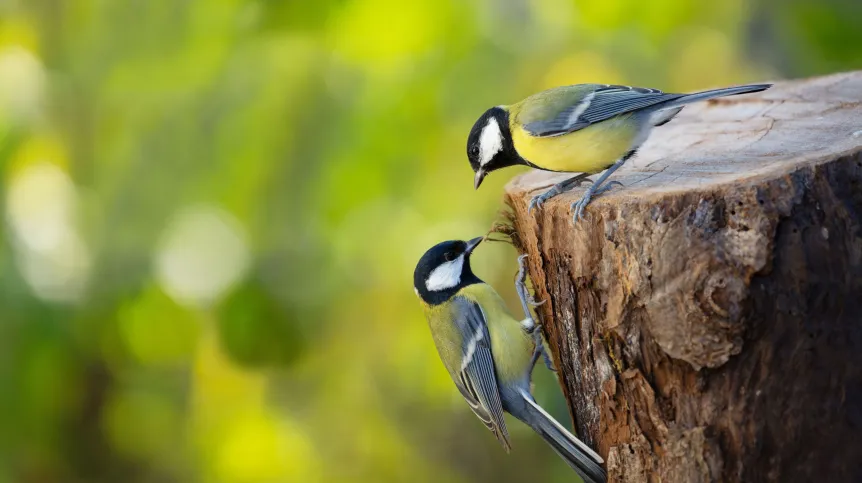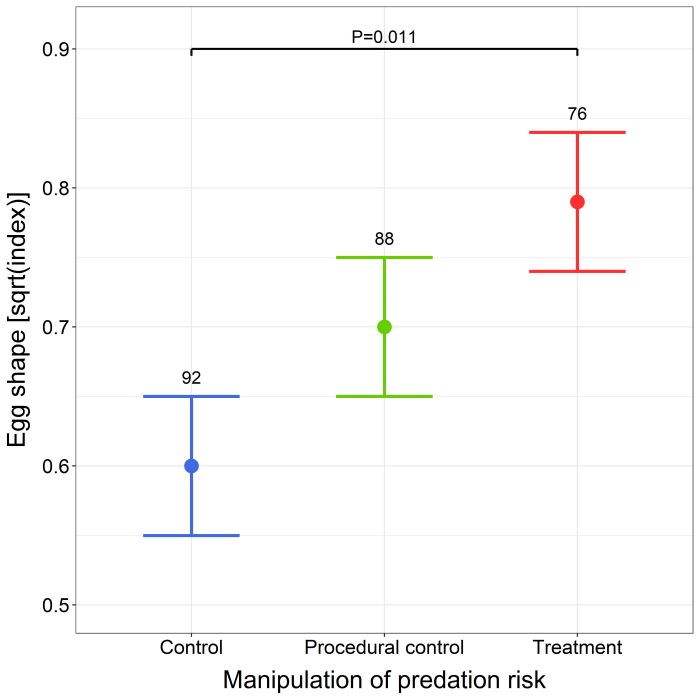
Do adult great tits perceive predator activity based on piles of feathers remaining from avian prey, and how does this affect their reproductive decisions? Scientists from the Institute of Nature Conservation PAS in Kraków answer these questions in a new publication.
Predators not only kill their prey but also cause changes in their physiology and behaviour. In birds, perceived predation risk affects reproductive decisions, such as the reduction of parental investment in offspring during both egg production and nestling rearing.
In previous studies, visual and vocal cues of predator presence have been widely used to test the direct effects of predation risk.
In the new study published in The European Zoological Journal (https://doi.org/10.1080/24750263.2023.2181988), Rafał Martyka and Piotr Skórka experimentally studied whether piles of feathers, simulating the remains of avian prey, induce changes in the reproductive decisions of adult birds', the representatives of the institute explain.
They said: “For example, sparrowhawk and goshawk pluck their bird prey before eating, resulting in a pile of feathers, which is a potential signal of the presence and activity of these predators.” 
Before and during egg laying, great tit pairs were exposed to piles of bright down and cover domestic goose feathers (treatment group), woodchips (procedural control group), or were not exposed (control group). The researchers found that the experiment affected maternal investment in individual eggs, but did not influence other reproductive parameters.
Dr. Martyka said: “The eggs were the largest in the group of birds exposed to feathers and chips (these groups did not differ significantly from each other), while both groups differed significantly from the control group, in which the eggs smaller (as shown in the attached chart).”
The scientist observed a different pattern with regard to the shape of the eggs.
Martyka said: “Females from the groups of birds exposed to feathers and chips laid more asymmetrical (pointed) eggs (again, these groups were not significantly different from each other). The most elliptical (symmetrical) eggs were in the control group, but this group was also not significantly different from the group exposed to chips, but it was significantly different from the group exposed to feathers.”

He concluded that clear (statistically significant) differences in the shape of eggs occurred between the group exposed to feathers and the control group. He said: “The shape of eggs of birds exposed to chips was between the shape observed in the group exposed to feathers and the shape observed in the control group (as shown in the attached graph).”
The results indicate that great tit females can perceive feathers and woodchips as informative cues, such as potential predation risk or habitat suitability, or as novel items in the environment.
Importantly, females respond to such cues by changing their maternal investment in eggs, which may result from an adaptive mechanism aimed at increasing offspring fitness in the face of specific environmental conditions experienced by a female.
(PAP)
bar/ zan/ kap/
tr. RL













